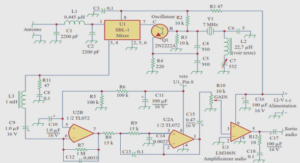Synthesis of Amines via Ionic or Radical Methods
pharmaceutical compounds. For instance, chlorpromazine is a dopamine antagonist of the typical antipsychotic class of medications possessing additional antiadrenergic, antiserotonergic, anticholinergic and antihistaminergic properties used to treat schizophrenia; chlorpheniramine (brand name: Chlorphen-12), as a first-generation alkylamine antihistamine is used to prevent the symptoms of allergic conditions such as rhinitis and urticarial. Alkaloids, a vast family of natural products, contain by definition at least one basic nitrogen. Swainsonine, an indolizidine alkaloid, is a potent inhibitor of Golgi α-mannosidase II, an immunomodulator, and a potential chemotherapy drug; recently, Igarashi and co-workers reported a new pyrrolidine alkaloid, preussin B, that was isolated from the culture extract of the fungus Simplicillium lanosoniveum TAMA 173 (Figure 2.1). In material science amines as starting materials are involved in the design of amine-reactive fluorescent dyes used to prepare bioconjugates for immunochemistry, fluorescence in situ hybridization (FISH), cell tracing, receptor labeling and fluorescent analog cytochemistry. As illustrated in Scheme 2.1, there have been a large number of fluorescent amino-reactive dyes used to label various biomolecules. While numerous methods for the preparation of functionalized amine have been reported over the decades, there is still a strong demand for new flexible routes to access complex amine derivatives. An observation made in our group demonstrated that a carbon radical can be stabilized by a phthalimido group, and thus the efficient intermolecular radical chain additions of phthalimido-substituted xanthates to various alkenes could be accomplished. As a result, we were encouraged us to apply this protocol in developing a more practical and general route to highly functionalized amines. In this chapter, our previous work on the preparation of phthalimido-substituted xanthates and xanthates containing other nitrogen group together with their applications in synthesis of functionalized amines will be briefly discussed.
Named reactions in amine synthesis
Numerous classical named reactions are known for the synthesis of amines, such as the Mannich reaction, the Strecker Reaction, the Kabachnik-Fields reaction, the Buchwald-Hartwig cross-coupling, the Petasis boronic acid-Mannich Reaction, the Gabriel synthesis, the Delépine reaction, the Eschweiler-Clarke reaction, the Schmidt reaction, the Curtius rearrangement, the Sharpless asymmetric aminohydroxylation, and the Staudinger ketene cycloaddition.Fourteen years later, Mannich studied the generality of this reaction.42 The Mannich reaction can be considered as the addition a CH-activated compounds to iminium salts or imines which lead to the formation of a substituted β-amino-carbonyl compound known as a Mannich base (Scheme 2.2).43 Nowadays, the Mannich-Reaction is widely applied in the synthesis of peptides, nucleotides, alkaloids and other amine related compounds. three-components directed Mannich reaction of unfunctionalized ketones. 44 As shown in Scheme 2.3, this multicomponent Mannich reaction consists of an aromatic aldehyde, p-toluenesulfonamide, and an unfunctionalized ketone. It was the first time a bifunctional quinidine thiourea was used as a Bronsted base catalyst to accomplish a highly diastereoselective and enantioselective Mannich reaction.
In 1850, A. Strecker devised the first laboratory method to access α-amino acids. The condensation of an aldehyde with ammonium chloride in the presence of cyanide generates an α-aminonitrile and hydrolysis finishes the desired α-amino-acid (Scheme 2.4).45 The development of the Strecker reaction allows the use of ammonia, primary, or secondary amines and both ketones and aldehydes as substrates. The Strecker reaction has proved to be a powerful tool for the synthesis of amino acids. The reaction of various N-protected imines with TMSCN was catalyzed by a partially hydrolyzed titanium alkoxide precatalyst together with a readily available N-salicyl-β-aminoalcohol ligand to form the corresponding aminonitrile with high enantioselectivity. This multi-component reaction was concurrently reported by Kabachnik and Fields in 1952 (Scheme 2.6). This one pot process involves the reaction of amines, carbonyl compounds and dialkyl phosphonates to form α-amino phosphonates and The readily available quinine (10 mol%) as the catalyst for the addition of diethyl phosphate to N-Boc protected imines ensured the high enantioselectivity.






